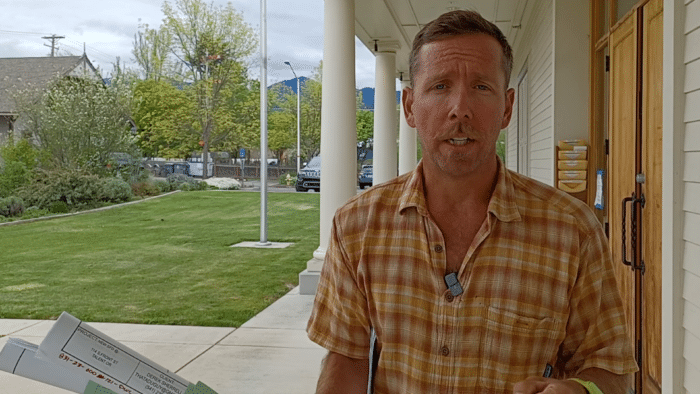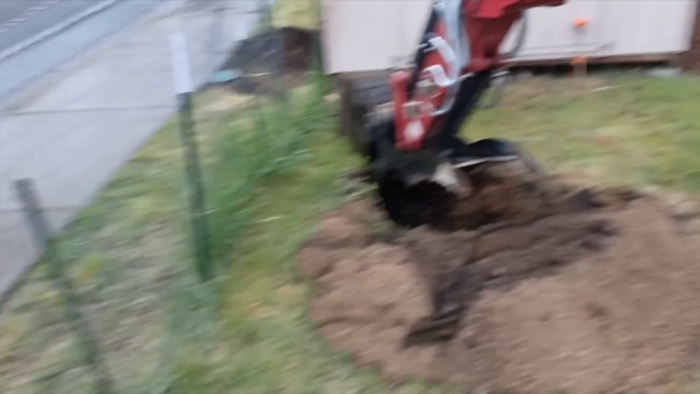Navigating Infill Development: From Planning to Construction
Home » Construction Techniques »
The Start of an Infill Development Project
Embarking on an infill development project, a property owner has recently completed the renovation of a bungalow and has begun work on a new construction on the same property. The project includes building a primary residence and an accessory dwelling unit (ADU). The property owner, who has spent over two decades mastering real estate development strategies, is set to receive the necessary permits to begin construction.
Before the groundbreaking, meticulous planning and site preparation are underway. Initial steps involve surveying the land and using string lines to delineate the boundaries and positioning of the house and ADU pads, ensuring they align parallel to the surrounding streets. This precise setup aims to integrate the new structures seamlessly into the existing neighborhood layout.
Site Preparation and Strategic Planning
Important considerations in laying out the units include adhering to setback requirements and optimizing space between the main house and ADU. Decisions about the distance between buildings are influenced by potential future zoning changes that might affect parking space regulations. To prepare for any scenario, the property owner conservatively allocates eight feet of separation between the structures, providing flexibility for modifications that may be required by future zoning adjustments.
Another critical aspect of the development process involves ensuring the availability of utilities. The property benefits from pre-existing infrastructure improvements made in the 1990s, including a water meter and sewer connections that were installed by the previous owner. These existing utilities yield significant cost savings and logistical advantages, emphasizing the importance of thorough due diligence in property development.
Excavation and Utility Connections
The excavation process begins with careful digging around existing utility vaults to prevent damage and ensure safety. The property’s water and sewer systems are accessed through pre-installed sleeves in the sidewalk, which were part of foresighted infrastructure planning by the previous owner. These preparations not only facilitate smoother development but also translate into considerable financial savings.
Throughout the excavation, safety measures are strictly adhered to, especially when working near public pathways and property boundaries. The excavation work is meticulously planned to optimize the sequence of digging and dirt removal, reducing potential disruptions and costs associated with handling construction waste.
Regulatory Compliance and Inspection Processes
The property owner shares insights into navigating the regulatory landscape, which involves a detailed application process for obtaining permits. The duration of permit approval can vary significantly depending on the local jurisdiction and the specific requirements of different municipal departments. The owner’s experience highlights that a complete and accurate application is crucial for a smooth permitting process. There are many government resources available to support developers doing infill development.
Furthermore, the owner explains that the construction site must adhere to several inspection milestones. These inspections ensure compliance with building codes and safety standards. The timeline for calling inspections can vary, and it’s advised to maintain open communication with local building officials to understand the necessary steps and keep the project on track.
Financial Aspects and Project Advancements
As the project progresses, the financial aspects of infill development become apparent. The property owner outlines the costs associated with permits and reviews, which amount to over thirty thousand dollars for this project. These expenses underscore the importance of budget planning in development projects.
The excavation work is challenging yet rewarding, as the team works diligently to prepare the site according to the specifications required by the soil engineer. The strategic removal and management of soil and the use of geotechnical fabrics to separate rock and soil layers are crucial steps that enhance the foundation’s stability.
Continuing Development and Community Impact
As the first week of intense physical work concludes, the project’s foundation begins to take shape. The use of modern engineering techniques and materials, like geotechnical fabric and strategically layered rock fills, sets the stage for the upcoming construction phases. These initial steps are critical in ensuring a solid base for the new structures that will soon rise from this carefully prepared ground.





What is infill development?
Infill development is the process of developing vacant or underutilized parcels within existing urban areas that are already largely developed. This type of development focuses on building new structures in unused spaces within a city’s existing infrastructure, rather than expanding into new, undeveloped areas (known as greenfield development). Key aspects of infill development include:
- Utilizing Existing Infrastructure: Infill projects make use of existing utilities, roads, and other public services, which can reduce the cost and environmental impact compared to developing new infrastructure.
- Revitalizing Urban Areas: By developing vacant lots or redeveloping deteriorated properties, infill development can enhance the aesthetic appeal and functionality of urban neighborhoods.
- Promoting Sustainable Growth: Infill development supports more sustainable urban growth by reducing urban sprawl and preserving open space and rural areas.
- Improving Community Connectivity: Infill projects often aim to integrate new developments seamlessly into the existing urban fabric, promoting walkability and connectivity within the community.
- Increasing Housing Supply: By developing underutilized urban land, infill projects can help address housing shortages and provide more options for urban living.
In summary, infill development is about making efficient use of land within already developed areas to create vibrant, sustainable, and livable urban environments.

